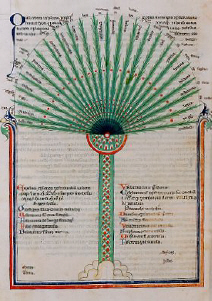22. But suppose that we identify alteration with Motion on the ground that Motion itself results in difference: how then do we proceed to define Motion?
It may roughly be characterized as the passage from the potentiality to its realization. That is potential which can either pass into a Form – for example, the potential statue – or else pass into actuality – such as the ability to walk: whenever progress is made towards the statue, this progress is Motion; and when the ability to walk is actualized in walking, this walking is itself Motion: dancing is, similarly, the motion produced by the potential dancer taking his steps.
In the one type of Motion a new Form comes into existence created by the motion; the other constitutes, as it were, the pure Form of the potentiality, and leaves nothing behind it when once the motion has ceased. Accordingly, the view would not be unreasonable which, taking some Forms to be active, others inactive, regarded Motion as a dynamic Form in opposition to the other Forms which are static, and further as the cause of whatever new Form ensues upon it. To proceed to identify this bodily motion with life would however be unwarrantable; it must be considered as identical only in name with the motions of Intellect and Soul.
That Motion is a genus we may be all the more confident in virtue of the difficulty – the impossibility even – of confining it within a definition.
But how can it be a Form in cases where the motion leads to deterioration, or is purely passive? Motion, we may suggest, is like the heat of the sun causing some things to grow and withering others. In so far as Motion is a common property, it is identical in both conditions; its apparent difference is due to the objects moved.
Is, then, becoming ill identical with becoming well? As motions they are identical. In what respect, then, do they differ? In their substrates? or is there some other criterion?
This question may however be postponed until we come to consider alteration: at present we have to discover what is the constant element in every motion, for only on this basis can we establish the claim of Motion to be a genus.
Perhaps the one term covers many meanings; its claim to generic status would then correspond to that of Being.
As a solution of the problem we may suggest that motions conducing to the natural state or functioning in natural conditions should perhaps, as we have already asserted, be regarded as being in a sense Forms, while those whose direction is contrary to nature must be supposed to be assimilated to the results towards which they lead.
But what is the constant element in alteration, in growth and birth and their opposites, in local change? What is that which makes them all motions? Surely it is the fact that in every case the object is never in the same state before and after the motion, that it cannot remain still and in complete inactivity but, so long as the motion is present, is continually urged to take a new condition, never acquiescing in Identity but always courting Difference; deprived of Difference, Motion perishes.
Thus, Difference may be predicated of Motion, not merely in the sense that it arises and persists in a difference of conditions, but in the sense of being itself perpetual difference. It follows that Time, as being created by Motion, also entails perpetual difference: Time is the measure of unceasing Motion, accompanying its course and, as it were, carried along its stream.
In short, the common basis of all Motion is the existence of a progression and an urge from potentiality and the potential to actuality and the actual: everything which has any kind of motion whatsoever derives this motion from a pre-existent potentiality within itself of activity or passivity.
